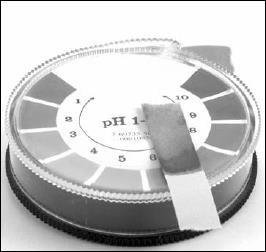Physics and ChemistryTemperature, Measurement, and Methodology |
Who is known as the founder of crystallography? |
The French priest and mineralogist René-Just Haüy (1743–1822) is called the father of crystallography. In 1781 Haüy had a fortunate accident when he dropped a piece of calcite and it broke into small fragments. He noticed that the fragments broke along straight planes that met at constant angles. Haüy hypothesized that each crystal was built from successive additions of what is now called a unit cell to form a simple geometric shape with constant angles. An identity or difference in crystalline form implied an identity or difference in chemical composition. This was the beginning of the science of crystallography.
By the early 1800s many physicists were experimenting with crystals; in particular, they were fascinated by their ability to bend light and separate it into its component colors. An important member of the emerging field of optical mineralogy was the British scientist David Brewster (1871–1868), who succeeded in classifying most known crystals according to their optical properties.
The work of French chemist Louis Pasteur (1822–1895) during the mid–1800s became the foundation for crystal polarimetry—a method by which light is polarized, or aligned to a single plane. Pierre Curie and his brother Jacques (1855–1941) discovered another phenomenon displayed by certain crystals called piezoelectricity. It is the creation of an electrical potential by squeezing certain crystals.
Perhaps the most important application of crystals is in the science of X-ray crystallography. Experiments in this field were first conducted by the German physicist Max von Laue (1879–1960). This work was perfected by William Henry Bragg (1862–1942) and William Lawrence Bragg (1890–1971), who were awarded the Nobel Prize in Physics in 1915 for their work. The synthesis of penicillin and insulin were made possible by the use of X-ray crystallography.

